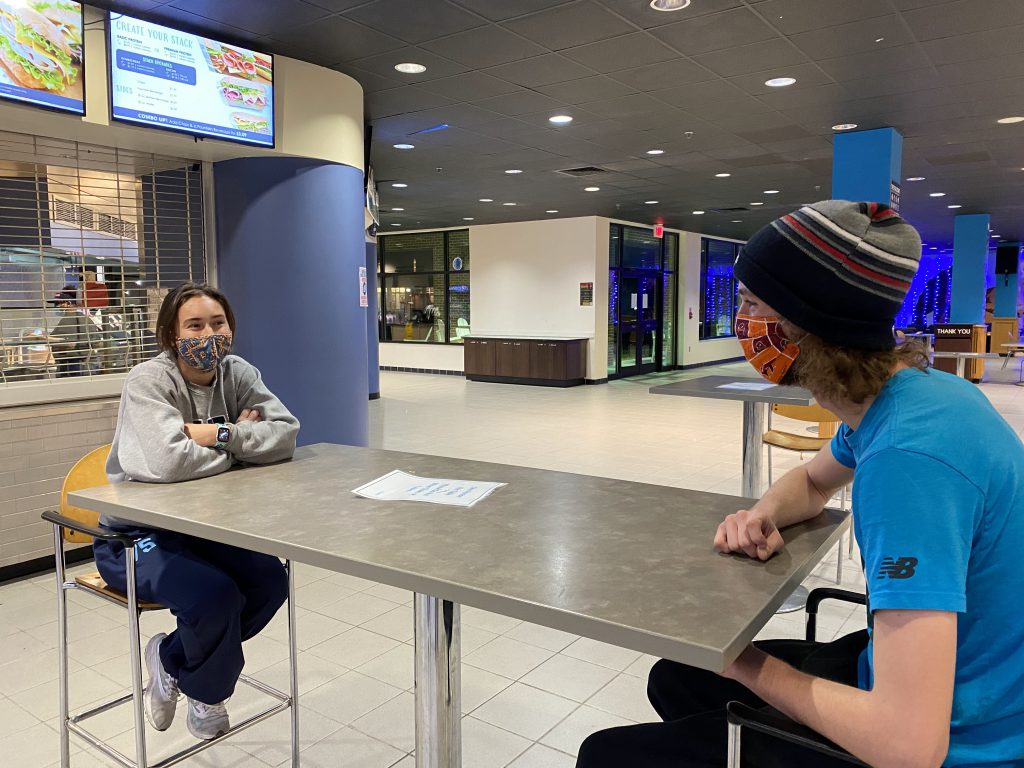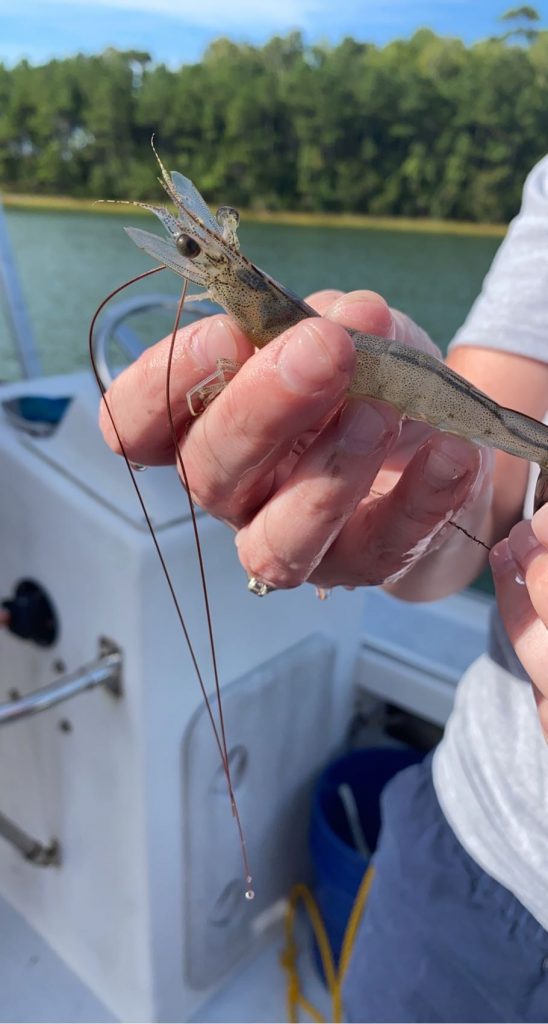Students enrolled in CHEM/EES 270 – Environmental Chemistry place an emphasis on the research process under the tutelage of a faculty professor. This project is overseen by Dr. Elizabeth Malcolm, professor of ocean and atmospheric sciences.
Benjamin Counsel, Juwon Seaborne, Brynn Vandergriff, Tiffany Warren and Christopher West conducted a research project entitled “The Removal of Metals by Algae in Stormwater Using Phycoremediation.” Their findings were presented in a poster format and featured in the poster fair at Port Day, organized by The Lighthouse: Center for Exploration & Discovery.
The abstract of their research is as follows: “Water quality impairment by heavy metal contamination is significantly impacting aquatic ecosystems and human health. Phycoremediation, the removal of heavy metals by algae, provides a low-cost and environmentally safe method. Laboratory analysis was conducted to evaluate the uptake of the following metals: cadmium, chromium, copper, and lead (Cd, Cr, Cu, and Pb) from algae samples collected from stormwater ponds by Greer that had been placed in mesocosm tanks.”
The research group was able to conclude that there was a strong positive correlation between heavy metal removal and bioconcentration factor for algae. Phycoremediation using algae with high metal removal capacity provides an energy-efficient and cost-effective approach for reducing nonpoint source pollution in surface waters at a large scale.
To provide background as to what phycoremediation is, the group provided this, “Phycoremediation is an environmentally friendly method that uses algae for the removal of water pollutants. Algae are photosynthetic, aquatic organisms that have an intrinsic property of nutrient, metal and organic compound removal from wastewater. It is an entirely biological process that has no chemicals required. Metal removal by algae in natural water bodies can assist in water quality improvement and restoration initiatives.”
When asked about the effects of heavy metals, the group provided this, “A considerable part of the heavy metals deposited on watersheds are from anthropogenic activities linked to adverse human health effects. Accumulation of toxic metals such as Hg, Cu, Cd and Cr in humans has several consequences related to growth and developmental abnormalities, carcinogenesis, neuromuscular control defects and mental postponement. Moreover, the standard physical or chemical treatments of natural aquatic ecosystems are not feasible for the remediation of nonpoint source pollution at a large scale.”
Benjamin Counsel, a senior in the group, discussed his thoughts on the overall project and how they conducted their research. “I felt like our overall research expanded my understanding of the facilities available within our school’s laboratory, as well as furthering my understanding and appreciation for the processes of analysis that we explored,” he said.
An important part of all scientific research is the ability to better an experiment for replication and address possible sources of error. When asked about how he would change his experiment if it was to be done again, Counsel said, “We had a large array of samples, but unfortunately some of them burned in the process and became unusable. If we could redo it, that would definitely be a change.”
Juwon Seaborne, a senior on the project, said, “The research and conclusions from this project can greatly improve the health of the ocean and increase the longevity of many fragile ecosystems.” As many know, the rich biodiversity of earth’s oceans is on the line and threatens to be diminished in the next 30 years.
When asked about possible sources of error, Seaborne was quick to note human error. He elaborated with, “Our data collection methods were not always the most systematic. Data and samples were misplaced, which greatly affected continuity and precision.”
By: Jack Palmer
jrpalmer@vwu.edu



